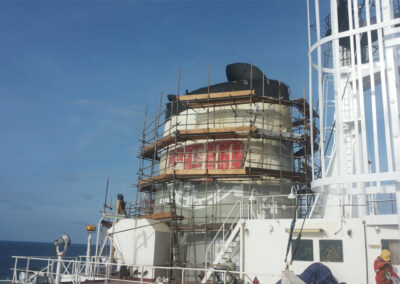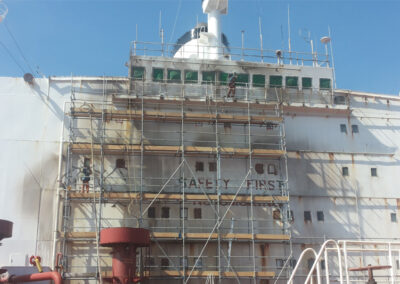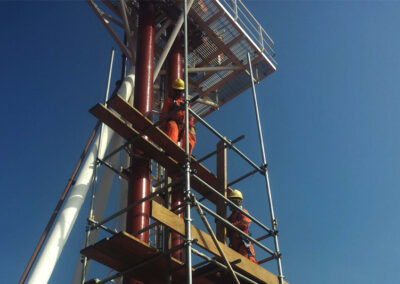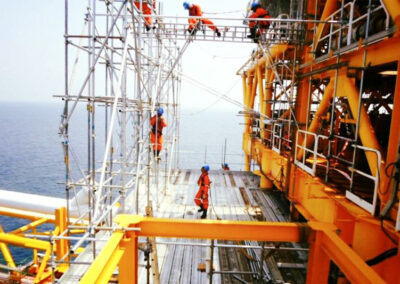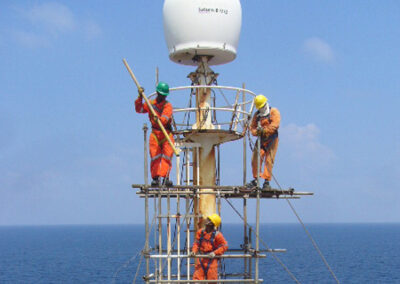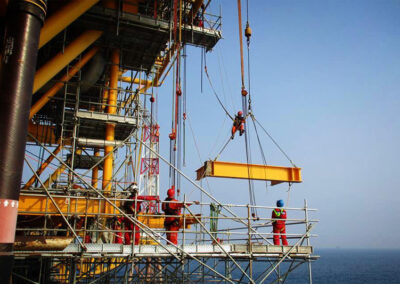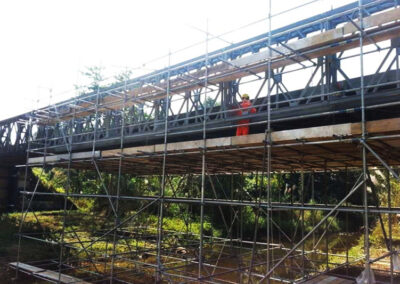Scaffolding
Scaffolding is a network of support frames and planks connected by joints that is temporaily erected to provide workers and their equipment access to the sides of buildings, interior walls and ceilings. Standard scaffolding is built modularly and for easy transport to multiple locations. It is utilized in adjusted forms for grandstand seating, exhibition stands, ski ramps and formwork and shoring.
Towering structures such as the Great Pyramids of Egypt or ancient Chinese temples identify the early use of scaffolding. However, scaffolding likely predates the ancient Egyptians and Chinese. Evidence of sockets found in the walls around Paleolithic cave paintings discovered in France suggests prehistoric humans used scaffolding more than 17,000 years ago. Ancient scaffolding was constructed of wood and secured using rope knots.
The purpose of scaffolding remains the same throughout history: provide labourers access to perform work in an area too high to reach. However, the technology has changed. Standards for safety, improved materials and stronger designs emerged in the early 20th century, significantly improving dangerous working conditions. Advances in metallurgy in the first part of the 20th century introduced tubular steel water pipes in place of timber poles, helping to standardize dimensions and improve structural stability
- Independent or birdcage scaffolding
- Single pole scaffolding
- Baker’s scaffolding
- Cantilever scaffolding
- Frame scaffolding
- Hanging or swing stage scaffolding
- Pump jack scaffolding
- Roll and fold scaffolding
- Tube and clamp scaffolding
- Hanging bracket scaffolding
- Bridging scaffolding
- Staging and lighting scaffolding
- Roofing scaffolding

Business Office
No. (117), Oasis Lane, (8) Mile, (5) Ward, Mayangone Township, Yangon, Myanmar.
951-651771, 951-669951, 959 780710113
Work Shop
951- 3585471

